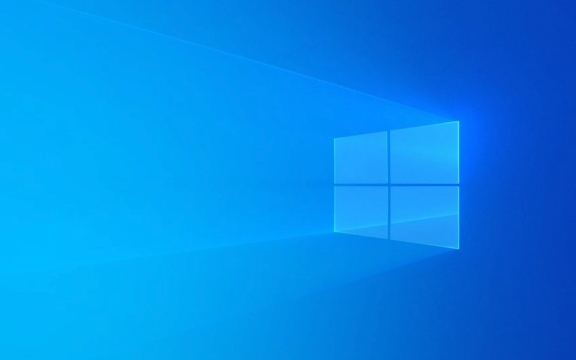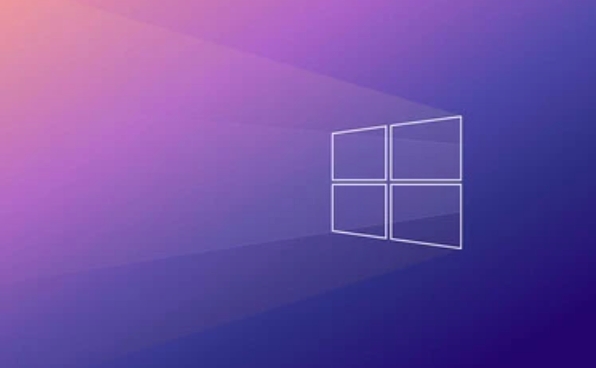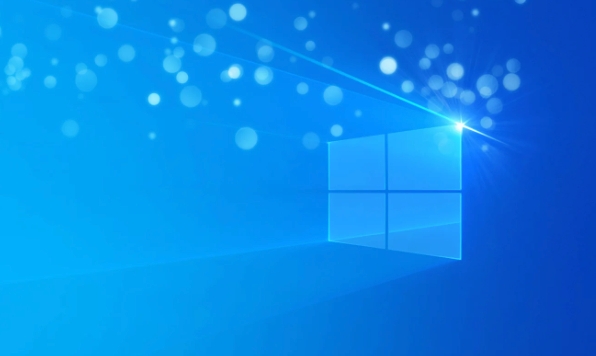How to take ownership of a folder in Windows
Jul 02, 2025 am 10:24 AMTo obtain full control of the Windows folder, you can operate it through the right-click menu or command prompt. First, change ownership and replace child object permissions in the security options of folder properties; second, use the administrator command prompt to execute the takeown and icacls commands for protected folders to force ownership and permissions. Notes include: Ensure that the operation sequence is obtained first and then the permissions are changed, avoid modifying key system directories, and dealing with UAC prompts and hidden folder problems.

Sometimes you need to have full control over a folder on Windows, such as modifying system files, cleaning protected directories, or fixing permission issues. At this time you may need to "get folder ownership". This step is usually not open to ordinary users by default, but it can be achieved in a few steps.

Use the right-click menu to get folder ownership (for most cases)
If you just want to get ownership of a normal folder, the easiest way is to use the right-click menu:

- Right-click on the target folder and select "Properties".
- Switch to the Security tab and click the Advanced button.
- In the Advanced Security Settings window, find the username next to Owner and click Change next to it.
- Enter the username you are currently logged in (or select "Advanced" to find the user), check "Replace subcontainer and object owner", and then click OK.
- Go back to the previous window, check "Replace All Subobjects Permissions" and click Apply and OK.
Once these operations are completed, you have complete control over the folder and its contents.
Forced ownership via a command prompt (suitable for complex or system folders)
Some folders are protected by the system, such as some content in the Windows installation directory or Program Files, and the permissions cannot be changed by normal methods. At this time, you can use the command prompt to force ownership:

- Open "Command Prompt" as administrator (Search for "cmd" in Win S, right-click to select "Run as administrator").
- Enter the following command (remember to replace
文件夾路徑with the actual path you want to operate):
takeown /F "Folder Path" /A /R
in:
-
/Fis the specified path; -
/Ameans giving ownership to the administrator group; -
/Ris to process subdirectories and files recursively.
After execution, you may also need to use the icacls command to reset the permissions, for example:
icacls "Folder Path" /grant administrators:F /t /c
This ensures that you really have all the permissions to the folder.
Notes and FAQs
- Insufficient permissions : Even if you are an administrator account, you may encounter a "access denied" prompt, because of the default permission restrictions. The correct order is to obtain ownership first and then adjust permissions.
- System folder risk : It is not recommended to modify the ownership and permissions of the system's key directories at will, as it may cause the system to be unstable or even fail to start.
- User Account Control (UAC) : The UAC prompt is normal during operation, just confirm and continue.
- Hide folders or protected system folders : Some folders are hidden by default, and you need to enable Show Hidden Files to see them.
If you are not sure whether a folder can change permissions safely, it is recommended to back up or review the information first to avoid trouble caused by misoperation.
Basically that's it. By mastering these two methods, in most cases you can successfully obtain control of the folder.
The above is the detailed content of How to take ownership of a folder in Windows. For more information, please follow other related articles on the PHP Chinese website!

Hot AI Tools

Undress AI Tool
Undress images for free

Undresser.AI Undress
AI-powered app for creating realistic nude photos

AI Clothes Remover
Online AI tool for removing clothes from photos.

Clothoff.io
AI clothes remover

Video Face Swap
Swap faces in any video effortlessly with our completely free AI face swap tool!

Hot Article

Hot Tools

Notepad++7.3.1
Easy-to-use and free code editor

SublimeText3 Chinese version
Chinese version, very easy to use

Zend Studio 13.0.1
Powerful PHP integrated development environment

Dreamweaver CS6
Visual web development tools

SublimeText3 Mac version
God-level code editing software (SublimeText3)
 How to change the system display language for all users in Windows
Jul 31, 2025 am 08:18 AM
How to change the system display language for all users in Windows
Jul 31, 2025 am 08:18 AM
InstallthedesiredlanguagepackviaSettings→Time&Language→Language®ion,ensuring"SetasmyWindowsdisplaylanguage"isselected.2.Changethesystemdisplaylanguageinthesamemenuandrestart.3.OpenControlPanel→Region→Administrativetab,click"
 How to reset the Microsoft Store in Windows
Jul 31, 2025 am 08:23 AM
How to reset the Microsoft Store in Windows
Jul 31, 2025 am 08:23 AM
ResettheMicrosoftStoreviaSettingsbygoingtoApps>Installedapps,selectingMicrosoftStore,clickingAdvancedoptions,thenRepairandResetifneeded.2.Ifthatfails,re-registertheStoreusingPowerShellasadminwiththecommand:Get-AppXPackage-NameMicrosoft.WindowsStor
 How to install Windows on a Mac without Boot Camp
Jul 31, 2025 am 11:58 AM
How to install Windows on a Mac without Boot Camp
Jul 31, 2025 am 11:58 AM
Without BootCamp, installing Windows on Mac is feasible and works for different chips and needs. 1. First check compatibility: The M1/M2 chip Mac cannot use BootCamp, it is recommended to use virtualization tools; the Intel chip Mac can manually create a boot USB disk and install it in partition. 2. Recommended to use virtual machines (VMs) for M1 and above chip users: Windows ISO files, virtualization software (such as ParallelsDesktop or UTM), at least 64GB of free space, and reasonably allocate resources. 3. IntelMac users can manually install it by booting the USB drive: USB drive, WindowsISO, DiskU is required
 How to reset the TCP/IP stack in Windows
Aug 02, 2025 pm 01:25 PM
How to reset the TCP/IP stack in Windows
Aug 02, 2025 pm 01:25 PM
ToresolvenetworkconnectivityissuesinWindows,resettheTCP/IPstackbyfirstopeningCommandPromptasAdministrator,thenrunningthecommandnetshintipreset,andfinallyrestartingyourcomputertoapplychanges;ifissuespersist,optionallyrunnetshwinsockresetandrebootagain
 How to install Windows on a Mac
Jul 31, 2025 am 10:07 AM
How to install Windows on a Mac
Jul 31, 2025 am 10:07 AM
ForIntel-basedMacs,useBootCampAssistanttocreateadual-bootsystemwithWindowsbypreparingaUSBdrive,downloadingaWindowsISO,partitioningthedisk,andinstallingWindowsalongsidemacOSwithsupportdrivers.2.ForAppleSiliconMacs(M1/M2/M3),usevirtualizationsoftwareli
 Step-by-step guide to installing Windows from an ISO file
Aug 01, 2025 am 01:10 AM
Step-by-step guide to installing Windows from an ISO file
Aug 01, 2025 am 01:10 AM
DownloadtheWindowsISOfromMicrosoft’sofficialsite.2.CreateabootableUSBusingMediaCreationToolorRufuswithaUSBdriveofatleast8GB.3.BootfromtheUSBbyaccessingthebootmenuoradjustingBIOS/UEFIsettings.4.InstallWindowsbyselectingcustominstallation,choosingtheco
 How to manage AppLocker policies in Windows
Aug 02, 2025 am 12:13 AM
How to manage AppLocker policies in Windows
Aug 02, 2025 am 12:13 AM
EnableAppLockerviaGroupPolicybyopeninggpedit.msc,navigatingtoApplicationControlPolicies,creatingdefaultrules,andconfiguringruletypes;2.Createcustomrulesusingpublisher,path,orhashconditions,preferringpublisherrulesforsecurityandflexibility;3.Testrules
 A guide to custom Windows installation options
Aug 01, 2025 am 04:48 AM
A guide to custom Windows installation options
Aug 01, 2025 am 04:48 AM
Choose"Custom:InstallWindowsonly(advanced)"forfullcontrol,asitallowsacleaninstallthatremovesoldissuesandoptimizesperformance.2.Duringsetup,managepartitionsbydeletingoldones(afterbackingupdata),creatingnewpartitions,formatting(usingNTFS),ors






